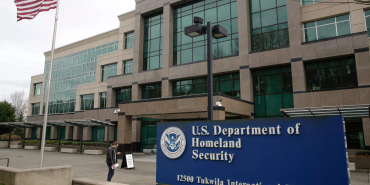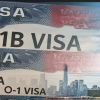Green Card or Canadian Permanent Residency? What Skilled Workers Need to Know

In today's interconnected global economy, skilled workers are increasingly weighing their options between the United States and Canada, each offering distinct pathways to permanent residency, and each with inherent advantages and disadvantages.
These skilled migrants are at the heart of a dynamic global workforce, and their decisions are influenced by a complex array of factors, including economic opportunity, quality of life, and immigration policies. With stakes high for both the individuals and the economies they choose to join, a comprehensive understanding of these options is vital. The US employment-based green card system remains a prominent route for those drawn by the American dream.
This pathway typically necessitates a job offer and employer sponsorship, a structure that provides stability but can also limit an applicant's flexibility. Figures show that the time required to obtain a green card via this method can vary significantly, ranging from one to three years, often dependent on the applicant's country of origin. The financial investment typically falls between $2,000 and $5,000, reflecting the cost of legal and administrative processes.
The US system offers advantages, particularly for those classified as "first preference workers" under the EB-1 visa, granting them priority processing. The EB-3 visa also broadens the scope by allowing unskilled workers to qualify. Moreover, the absence of an age limit is a notable distinction from the Canadian system.
"If you qualify for an EB-1 visa, you can get much higher priority," emphasises an immigration expert.
Despite these benefits, the US system is not without its challenges. Applicants from certain countries can encounter decades-long waiting periods, reflecting the quota system and high demand. The necessity of a job offer, coupled with the stringent PERM labour certification, can further complicate matters. Immigration lawyers note that a "visa bulletin waiting period may be required," adding to the uncertainty.
Conversely, Canada's Express Entry system presents an arguably more accessible and transparent avenue to permanent residency. Unlike the US system, a job offer is not mandatory, and employer sponsorship is not required, thereby offering greater autonomy to the applicant. The processing speed is a major advantage, with successful candidates typically securing PR within six months. The estimated cost generally ranges from $1,525 to $2,000, making it a financially competitive option.
The Express Entry system employs an objective scoring system, prioritising the highest-ranking candidates. While age is a factor, favouring those between 20 and 29, the absence of source country discrimination provides a significant advantage for applicants from countries experiencing lengthy delays in the US system. As Canadian immigration officials confirm, "source country does not affect wait time," removing a key barrier faced by many.
However, the Canadian system also presents hurdles. Applicants must undergo language tests and secure Educational Credential Assessments (ECAs) for foreign qualifications, adding complexity and cost. Gaining sufficient Canadian work experience to become a competitive candidate can take several years. The Canadian PR system is competitive, with high cut-off scores for certain draw types, and unskilled workers are excluded from the Express Entry pool, as "unskilled workers do not qualify," according to Canadian immigration policy.
Obtaining a US employment-based green card can take anywhere from 20 months to 20 years, contingent on the applicant's country of origin and the availability of visa numbers. In contrast, the Canadian Express Entry system presents a more streamlined process, with timelines ranging from 5 months to 1.5 years. This substantial difference in processing time is a significant factor for many applicants.
Eligibility Requirements: A Detailed Comparison
The eligibility criteria for both the US and Canadian immigration systems diverge substantially. In the US, skilled foreign nationals can obtain a green card under one of three worker preference categories: EB-1 (priority workers), EB-2 (advanced degree or exceptional ability), and EB-3 (skilled workers and professionals). Each category possesses its own set of eligibility criteria and required supporting evidence. The EB-1 category, for instance, is reserved for individuals with extraordinary ability in their field.
To qualify, applicants must demonstrate sustained national or international acclaim, and typically require a one-time achievement, such as a Pulitzer Prize or Olympic medal, or at least three other significant achievements. This high bar reflects the category's exclusivity. In Canada, skilled foreign workers can qualify for permanent residency through one of three federal Express Entry programs: the Canadian Experience Class (CEC), the Federal Skilled Worker Program (FSWP), and the Federal Skilled Trades Program (FSTP). Each program features its own eligibility requirements, focusing on factors such as work experience, language proficiency, education, and settlement funds.
The FSWP, for instance, requires applicants to possess at least one year of continuous work experience in a skilled occupation (TEER 0, 1, 2, or 3) within the past 10 years, as well as a Canadian high school diploma (or foreign equivalent). Applicants must also score at least 67 points out of 100 on the Skilled Worker Selection Grid, highlighting the competitive nature of the program.
Sponsoring a Spouse
For those seeking to immigrate with their families, both the US and Canada offer spousal sponsorship programs. However, the requirements and considerations differ. In the US, green card holders can sponsor their spouses for permanent residence, provided they reside in the US and meet certain financial support requirements. The cost of spousal sponsorship can range from $1,300 to $2,000 USD, and the processing time can take anywhere from 2.5 to 4 years.
In Canada, permanent residents can sponsor their spouses, common-law partners, and conjugal partners, provided they have been PR for five years and reside in Canada. The cost of spousal sponsorship is typically around $1,205 CAD, and the processing time can range from 11 months to 2.8 years, depending on the applicant's place of residence. With Canadian PR, nationality doesn't matter in sponsorship applications.
For skilled workers, deciding between the US and Canada requires careful consideration of their individual circumstances, professional goals, and family needs. Both countries offer unique opportunities, but understanding the intricacies of their respective immigration systems is essential for making an informed and strategic decision.








Add new comment